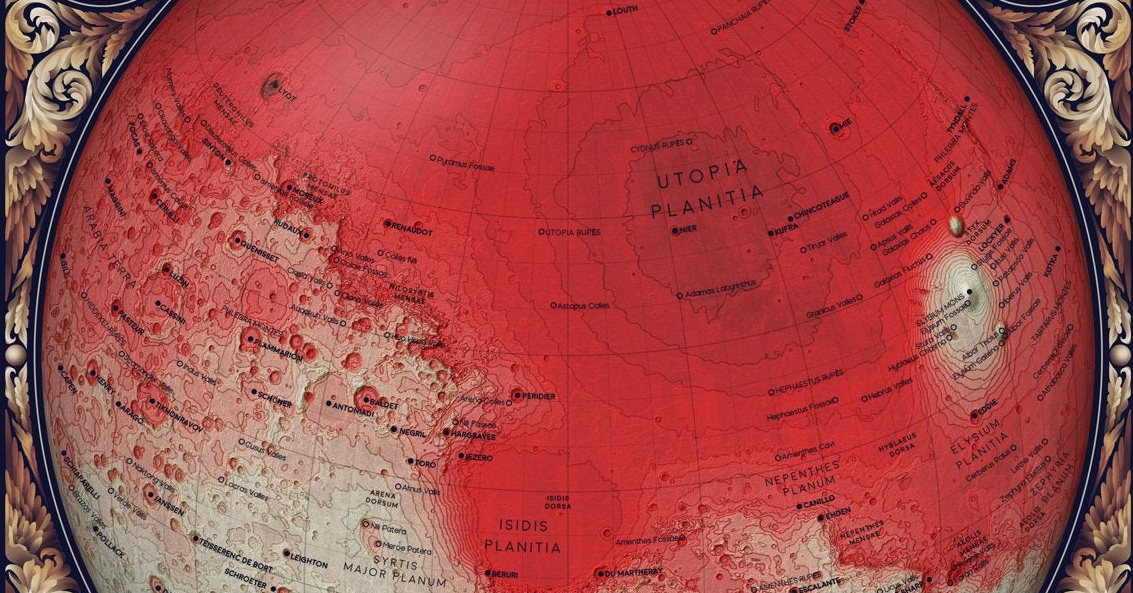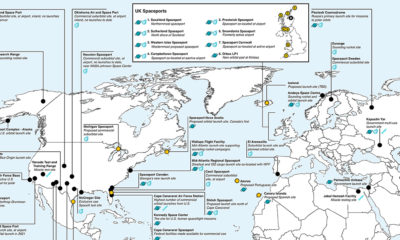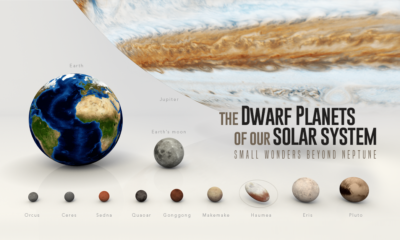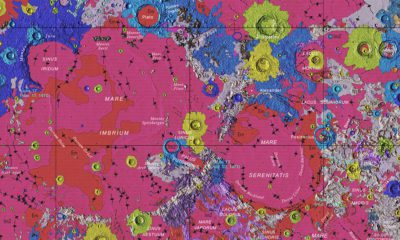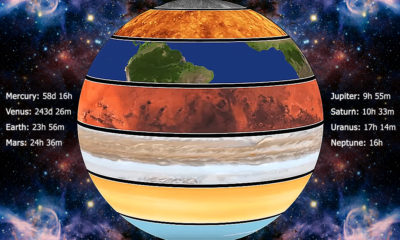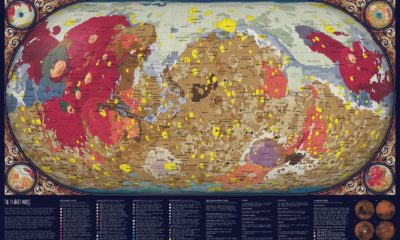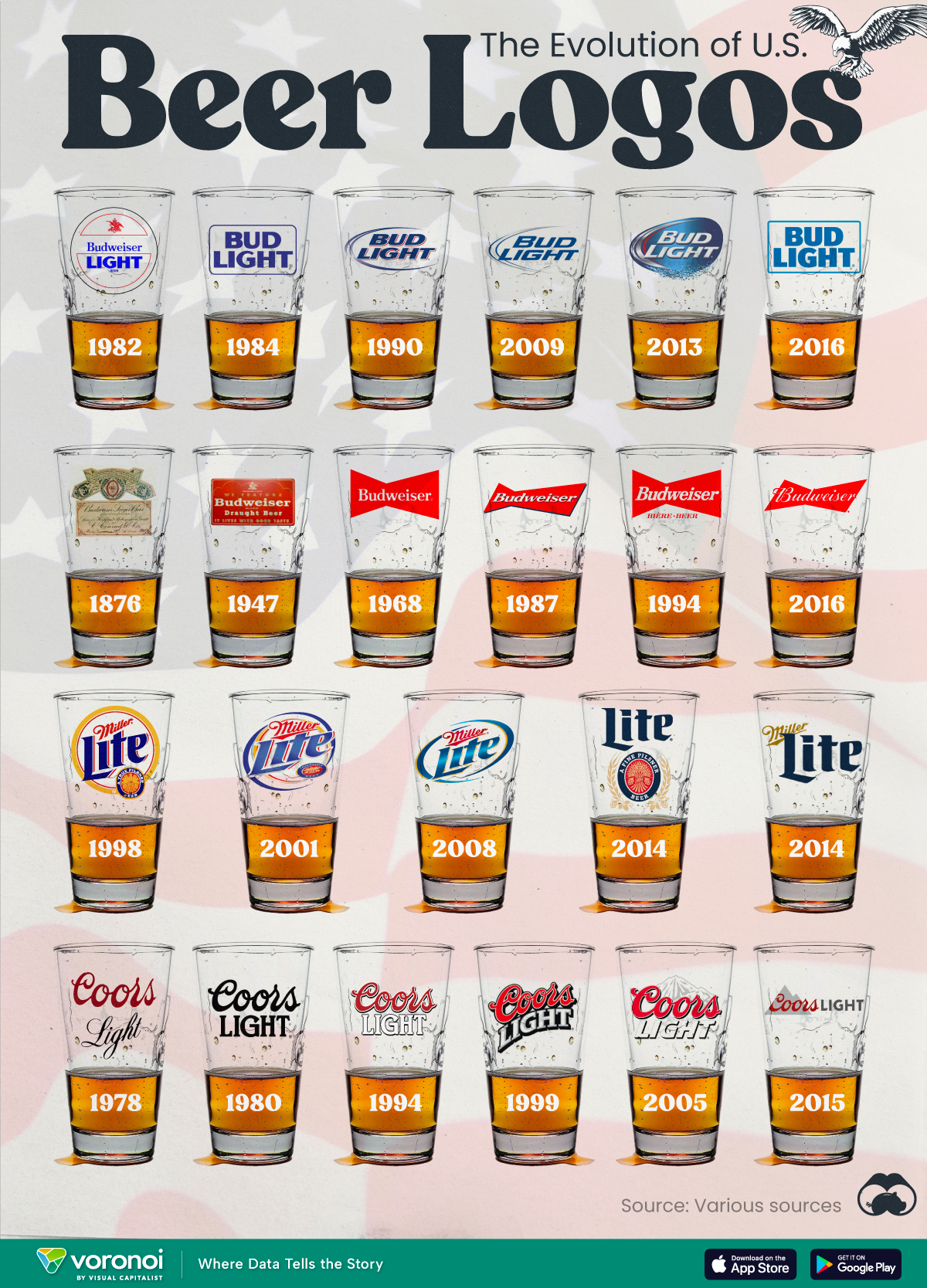Misc
The Topography of Mars: Visualizing an Alien Landscape
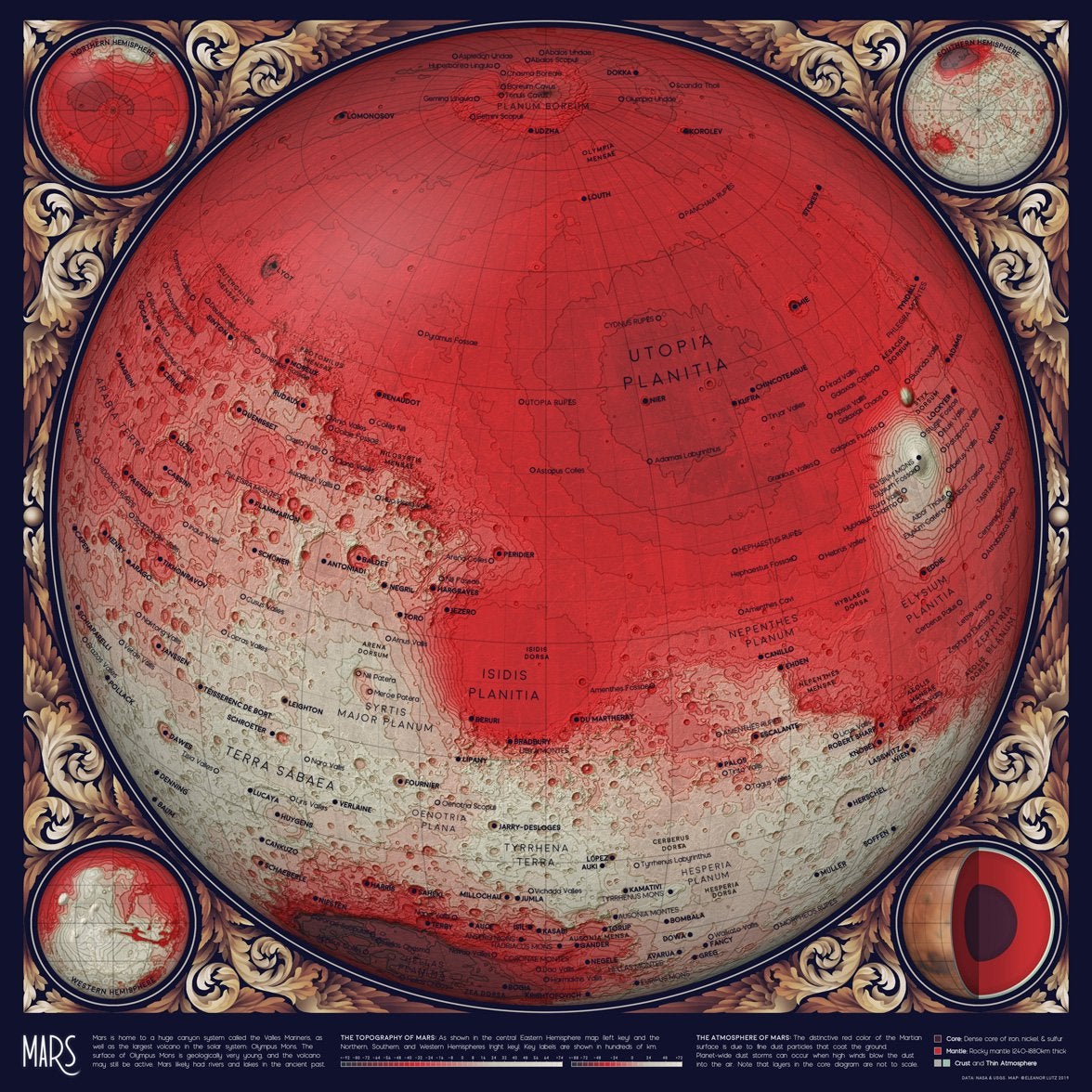
The Topography of Mars: Visualizing an Alien Landscape
The surface of the Red Planet is full of surprises.
While the Grand Canyon and Mount Everest are both impressive features on Earth, they are nothing next to Valles Marineris and Olympus Mons, their epic Martian counterparts.
Even more extraordinary, the overall difference between the highest and lowest point on Mars is 19 miles (31 km), whereas just 12 miles (20 km) separates the summit of Mount Everest from the bottom of the Mariana Trench on Earth.
This week’s map comes to us from Reddit user /hellofromthemoon, who carefully laid out the terrain of Mars in awesome detail.
Take a look…
Lay of the Land
Mars can be divided into two major regions, separated by a ridge of mountains roughly around the planet’s middle.
On the north side are lowlands that have been shaped by lava flows, creating a surface dominated by large plains. Meanwhile, the southern hemisphere is mountainous, with many meteorite impact craters, some of which stretch for hundreds of kilometers.
The Plains Game
The plains of Mars fall into two categories: the planitia (Latin for “plains”) and the maria (Latin for “seas”). The latter type is named after the sea because these regions appeared to be under water in the eyes of early astronomers. But actually, the surfaces of these regions are covered with many rocks, making them look darker to the eye.
The second type of plains are the planitia, and they account for vast areas covered by sand rich in iron oxide. The strong winds that blow the sand and dust around can change the configuration of the plains, forming new patterns on the surface of Mars. However, the planet’s features remain relatively unchanged over time.
One of the largest plains is the Utopia Planitia (Latin for “Nowhere Land Plain”) impact basin. This giant impact crater lies within a larger lava plain. With an estimated diameter of 3,300 km, Utopia Planitia is the largest recognized impact basin in the solar system.
As Above, so Below
The northern and southern hemispheres are vastly different from one another on Mars, and such a stark difference is unlike any other planet in the solar system. Patterns of internal magma flow could have caused the variation, but some scientists think it is the result of Mars taking one or several major impacts.
About 4.5 billion years ago, Mars formed from the collection of rocks that circle the sun before they formed the planets. Over time, the red planet’s molten masses differentiated into a core, a mantle, and an outer crust.
Understanding how the red planet’s topography changes over time is a crucial step in grasping how the planet formed. That is why NASA launched the InSight Mars lander on May 5, 2019. This probe will listen for vibrations deep within the Martian crust to further understand the composition of the planet.
Site Selection
Understanding the topography of Mars is critical for any mission to the planet, including the selection of a site for a potential colony. There are three basic criteria for picking a manned mission landing site:
- A spot that is sustainable in terms of water, energy generation, and building materials.
- A spot that is scientifically interesting for a long mission.
- A spot that is safe to land.
Brian Hynek, a planetary scientist and Director of the Center for Astrobiology at the University of Colorado at Boulder, offers five potential landing sites:
- Outer edge of Mars’ North polar ice cap
- Deep canyon of Valles Marineris
- Martian “glaciers” in the Hellas Basin near Mars’ mid-latitudes
- Arabia Terra
- Martian lava tubes and caves
With growing information from every new mission to Mars, a greater picture will help guide future human activity and ambitions on the planet.
Misc
The Evolution of U.S. Beer Logos
In this graphic, we analyze the evolution of popular U.S. beer logos like Budweiser, Coors Light, Bud Light, and more.
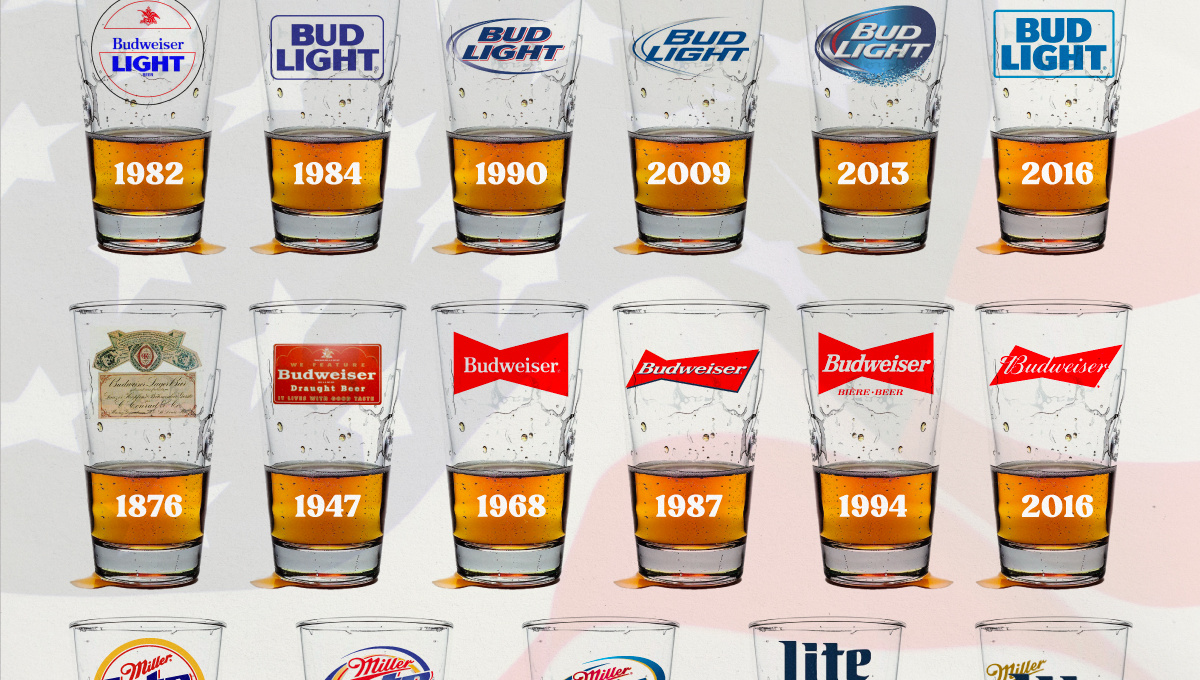
The Evolution of U.S. Beer Logos
This was originally posted on our Voronoi app. Download the app for free on iOS or Android and discover incredible data-driven charts from a variety of trusted sources.
Despite selling a popular product, beer companies have to be creative to stand out in a competitive market.
In this graphic, we analyze the evolution of some U.S. beer logos based on various sources. We chose brands based on a mixture of criteria, including popularity (based on YouGov surveys), availability of logo assets, and those with interesting developments.
Bud Light Back to the ’80s
Despite recent backlash and calls for a boycott after sending a commemorative can to transgender influencer Dylan Mulvaney, Bud Light remains one of America’s best-selling beers.
The brand of light beer, owned by the Anheuser-Busch company, has switched from its more circular logo with italic letters adopted in the 1990s back to the Bud Light badge of the 1980s. It is composed of heavy uppercase lettering, written in two levels in a shade of blue with the inscription placed on a solid white background and enclosed in a thin rectangular frame.
Miller Lite Goes Old School
After following a similar approach to Bud Light’s branding throughout the 2000s, Miller Lite decided to undergo a major rebranding in 2014.
The company returned to its 1970s roots, once again combining a white can with its original blue, gold, and red logo. The redesign was largely considered a success, given that Miller Lite sales immediately increased following the change.
A Symbol of American Brewing
The oldest brand on our U.S. beer list, the Budweiser logo, has undergone more than 15 changes over the years.
The design of two connected triangles represents a red bow tie, as a symbol of American brewing.
The colors of the Budweiser logo include a vibrant red, which helps the logo stand out and be easily recognizable from a distance. Studies also suggest that the color red stimulates appetite. Meanwhile, the white inscription symbolizes purity and cleanliness.
Curious to learn more about the beer market? Check out this graphic about global beer consumption.
-

 Money6 days ago
Money6 days agoCharted: Which Country Has the Most Billionaires in 2024?
-

 Energy2 weeks ago
Energy2 weeks agoRanked: The Top 10 EV Battery Manufacturers in 2023
-

 Countries2 weeks ago
Countries2 weeks agoCountries With the Largest Happiness Gains Since 2010
-

 Economy2 weeks ago
Economy2 weeks agoVC+: Get Our Key Takeaways From the IMF’s World Economic Outlook
-

 Demographics2 weeks ago
Demographics2 weeks agoThe Countries That Have Become Sadder Since 2010
-

 Money2 weeks ago
Money2 weeks agoCharted: Who Has Savings in This Economy?
-

 Technology1 week ago
Technology1 week agoVisualizing AI Patents by Country
-

 Economy1 week ago
Economy1 week agoEconomic Growth Forecasts for G7 and BRICS Countries in 2024

